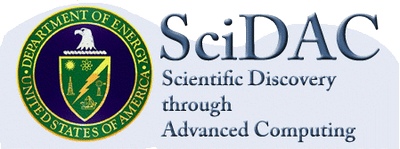
|
Nucl. Phys. Proc.Suppl. 140 (2005) 832
The highly successful Chroma software suite,
developed under SciDAC
and built over a layered API structure, is used worldwide for
calculations ranging across nuclear and high energy physics.
Chroma provides a computational lattice field theory toolbox
which is flexible, portable, and efficient on a wide range of
architectures from desktop workstations to clusters, and
leadership computing resources.
|

|
Phys. Rev. D88 (2013) 094505
The hunt for harbingers of gluonic excitations in the spectrum
of hadrons formed from quarks and gluons is a major focus of the
experimental programs of GlueX, CLAS12 @ JLab, and COMPASS,
LHCb@CERN, BESIII@Beijing. Lattice QCD calculations of the
spectrum have suggested there are gluonic excitations with an
energy scale about 1.3GeV within the meson spectrum of QCD.
|

|
Phys. Rev. D84 (2012) 074508;
Phys. Rev. D85 (2012) 054016
Researches of generations have assumed that there are ``missing''
baryons states suggested by phenomenology. Lattice QCD has
demonstrated there are such states and their counting matches
theory predicitions, except for extra states that are ``hybrid
in nature''.
|
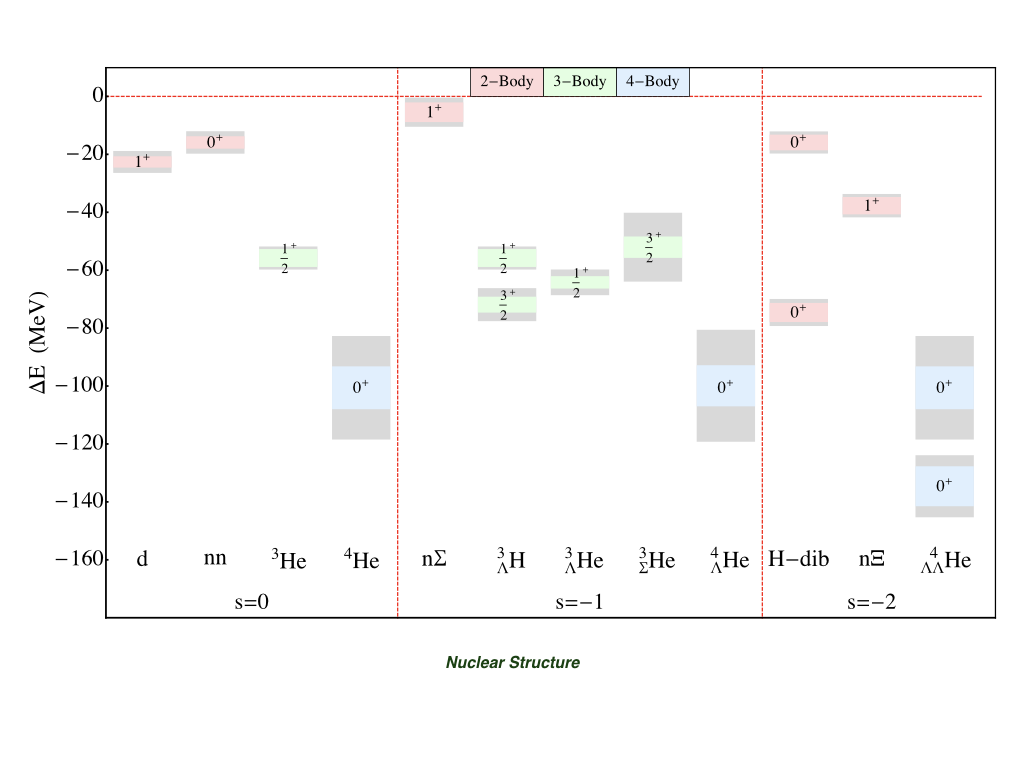
|
Phys. Rev. D87 (2013) 034506
The confluence of algorithm and software development under
SciDAC has enabled the first calculation of the binding energies
of nuclei and hyper-nuclei directly from quarks and gluons. New
developments in effective field theory allow these QCD
calculations to validate and predict properties of heavier nuclei.
|
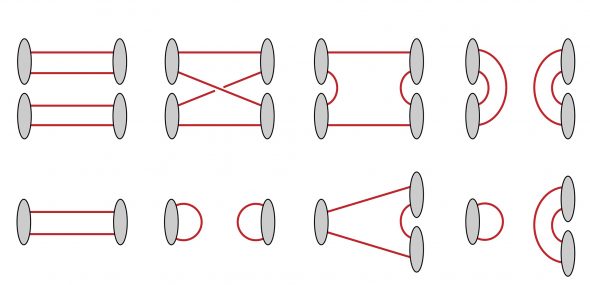
|
Oak Ridge Leadership Computing Facility Highlights,
2017-06-05
Computational findings support advancements in large-scale Jefferson
Lab experiments. A team of computational researchers, led by Jefferson Lab’s Robert Edwards, has been using the Cray XK7 Titan supercomputer at the Oak Ridge Leadership Computing Facility (OLCF)—a US Department of Energy (DOE) Office of Science User Facility located at DOE’s Oak Ridge National Laboratory.
|
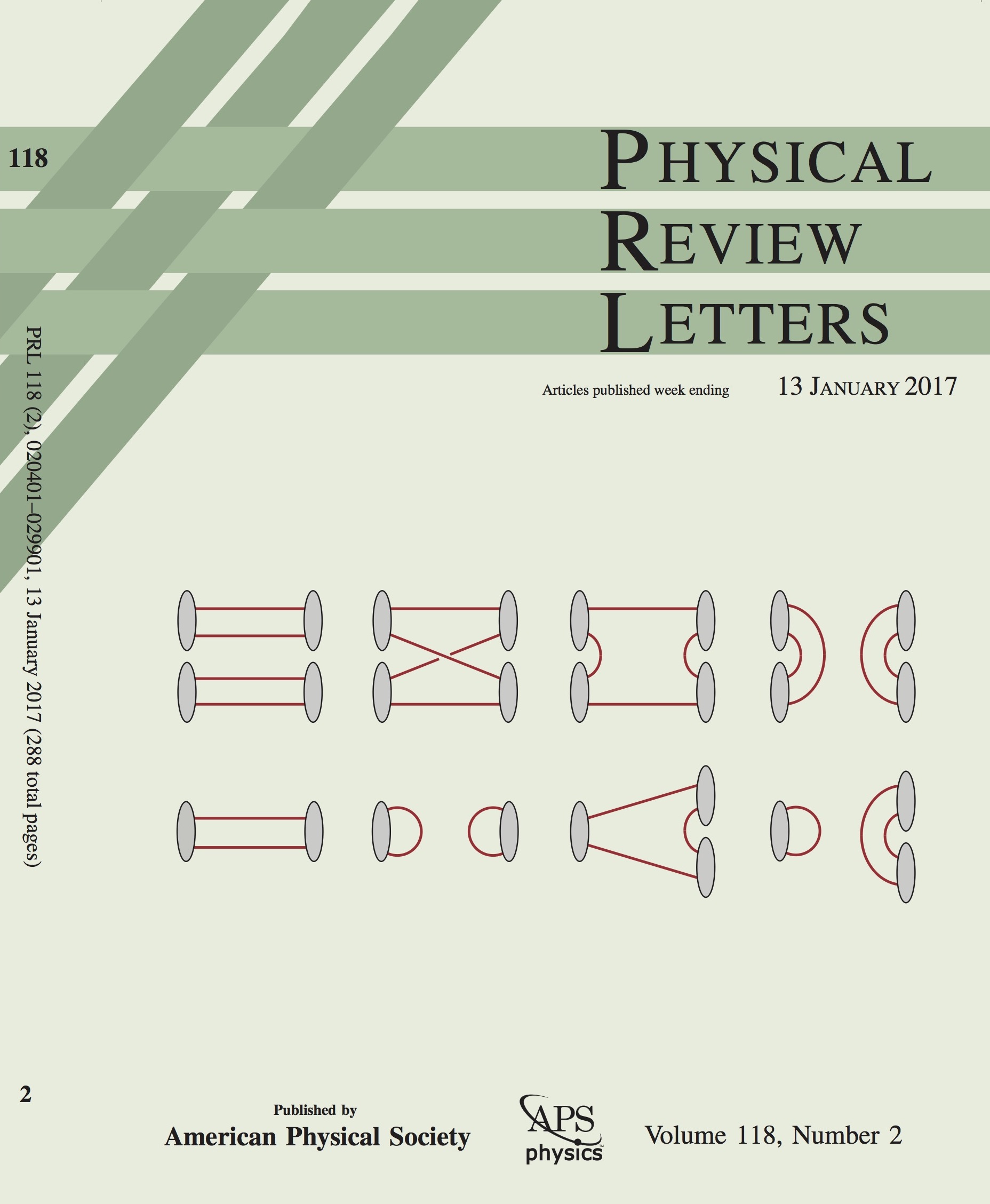
|
Jefferson Lab Highlights, 2017-03-30
A constant conversation deep inside the heart of matter leads to our
visible universe. Much like two friendly neighbors getting together to chat over a cup of coffee, the minuscule particles in our sub-atomic world also come together to engage in a kind of conversation. Now, nuclear scientists are developing tools to allow them to listen in on the particles gab fests and learn more about how they stick together to build our visible universe.
|

|
Oak Ridge Leadership Computing Facility Highlights,
2016-12-07
Team exploits supercomputer parallelism for computational Quantum
Chromodynamics. Robert Edwards serves as the principal investigator on a project that uses computation to inform the GlueX experiment as well as corroborate experimental findings. To that end the team has been using the Titan supercomputer at DOE’s Oak Ridge National Laboratory.
|
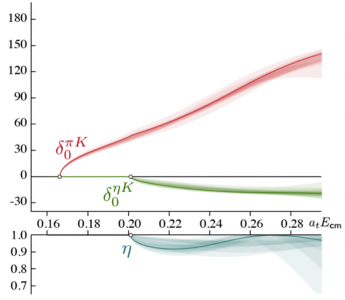
|
Oak Ridge Leadership Computing Facility Highlights,
2015-07-07
JLab team uses Titan to investigate exotic mesons. Last year, they were awarded an Advanced Scientific Computing Research (ASCR) Leadership Computing Challenge (ALCC) allocation to run lattice quantum chromodynamics (LQCD) calculations that can accurately analyze the interactions between quarks and gluons in a vacuum across both space and time.
|
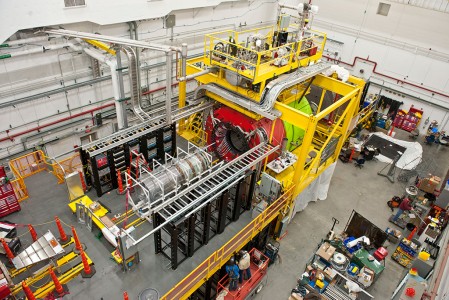
|
Oak Ridge Leadership Computing Facility Highlights,
2014-03-18
Excited particles help explain the universe. A team from Thomas Jefferson National Accelerator Facility (JLab) in Virginia is working to deepen our understanding of quarks, enlisting the help of Oak Ridge National Laboratory’s Titan supercomputer.
|
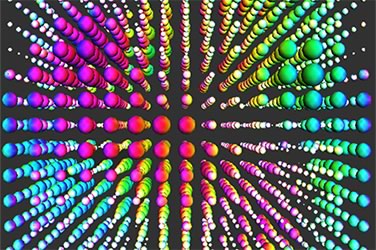
|
Science Node, 2011-06-15
Researchers worldwide have access to a growing library of
Quantum Chromodynamics software that has been ported to run on
graphics processing units, thanks to the efforts of a handful of
researchers.
Using a cluster of 200 GPUs, the hadspec collaboration were able to compute for the first time the highly 'excited' spectra generated by a type of bound quark states - also known as sub-atomic particles - called "exotic isoscalar mesons." In particular, they predicted the mass of a particle that, if confirmed in experiments, suggests that quarks and the "glue" that holds them together are bound in a way that has never before been seen.
|
